More than a decade developing instructions for Truper
I recently reached my 11th year as a supplier for Truper, developing instruction manuals for its electric, hydraulic, pneumatic, gasoline and wireless machines and tools. More than a decade of work should not go unnoticed; let this article serve as a celebration. I reached the end of 2022 with 525 finished manuals that are currently in circulation in different parts of the world, each one accompanying a different piece of equipment, all of them entrusted with the mission of explaining to the user, in the best possible way, how to operate their tool in order to safely obtain its full potential.An all-in-one project
The creation of Truper’s instruction manuals is one of my most beloved projects, hands down. One of the most unique ones, too, as it brings together instructional, graphic and systematic design, as well as writing, user experience, infographics, technical illustrations, vector drawing and isometric art.
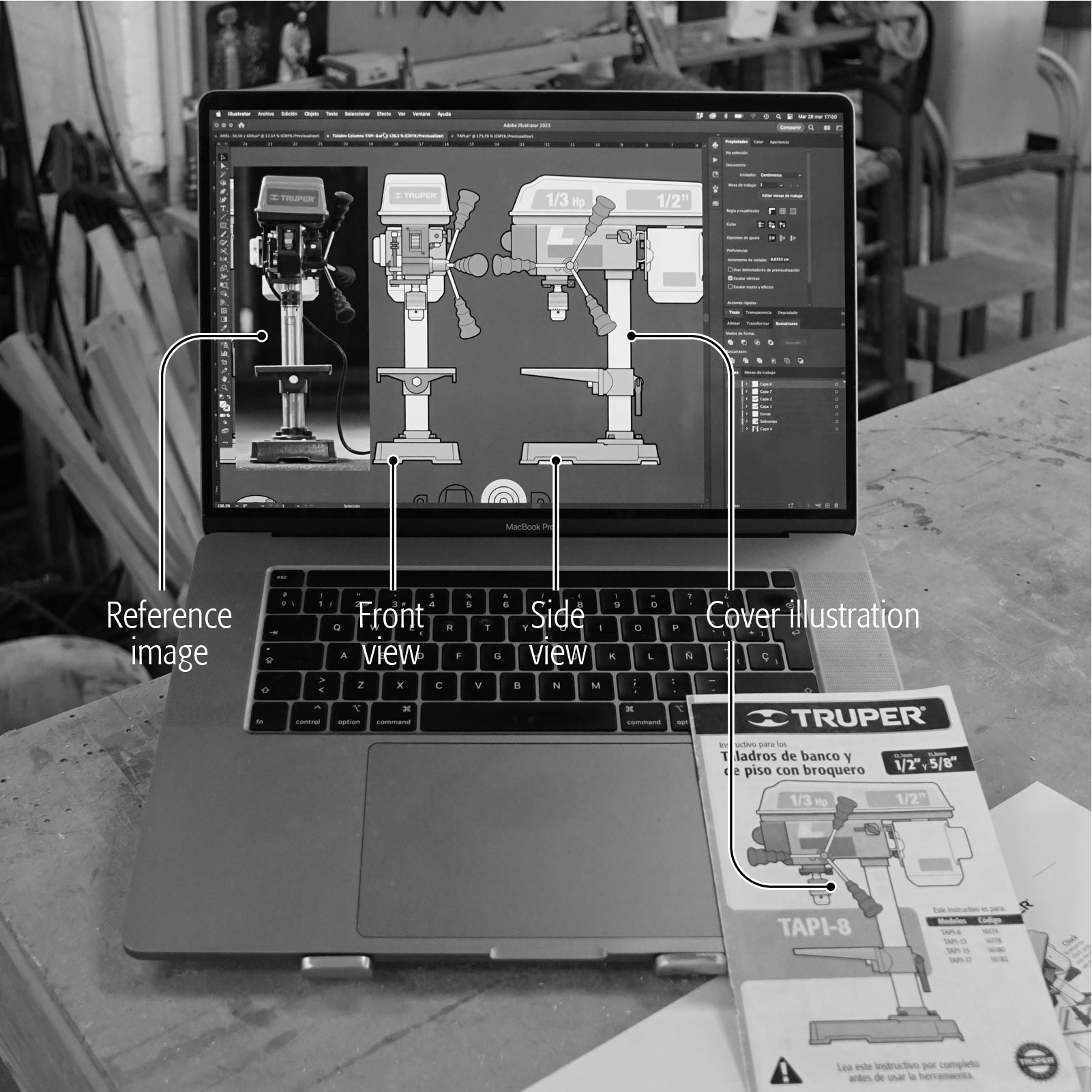
Designing to contribute
I have never intended for my work to go viral on social media, grace the front row of a magazine stand or be on the covers of best-sellers. Quite the contrary: I feel extremely satisfied that my work can be kept in the storeroom or the shelf of a workshop, waiting to fulfill its function: to be useful. Useful, and always at hand when needed by anyone who works in construction, carpentry, plumbing or manufacturing, or just someone who needs to repair something at home, as is the case of Carole, who was grateful that the instructions for her cordless drill were easy to follow. The fact that my work transcends in this way is certainly one of the reasons why I am so fond of this project.
Perhaps I am too much of an idealist, but that has been essential to maintain the project’s quality over the years.
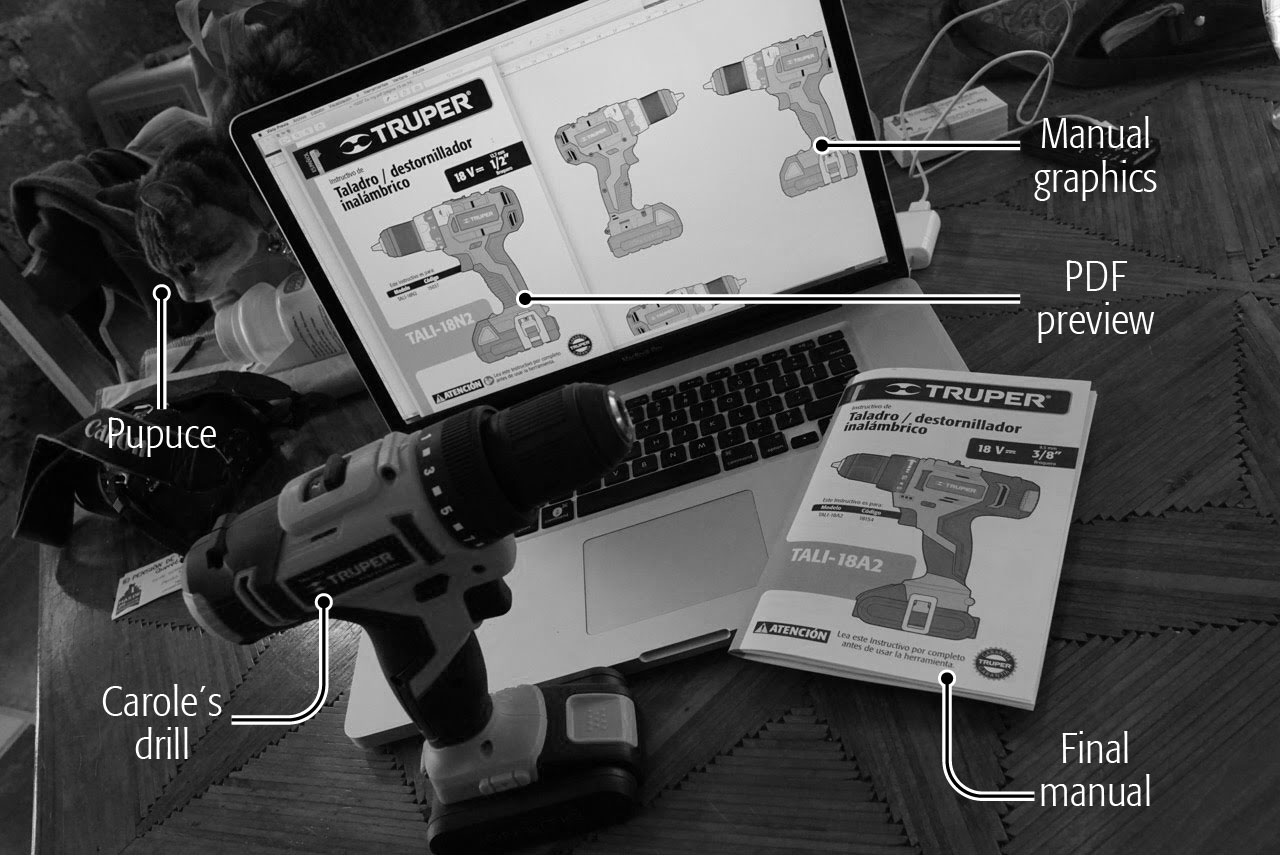
How the Truper manual project started
So, how did it all begin?
I think that the unexpected origin of this undertaking might seem interesting to many, especially freelance designers:
Sometime during the second half of 2012, my dad decided to bring home some “machine.” However, my mom wasn’t exactly crazy about having a dusty box in the middle of the room, and it wasn’t long before she called me to see if I was interested in it. I was intrigued; I have always been fascinated by tools, so I went to get it.
It was a SCA-16X Truper bench jig saw. Dusty, but in good condition. I managed to get it to work, but I still looked for the manual so I could learn more about it (yes, I am that kind of person). I did not find it. It was lost. Luckily, I was able to find it without too much trouble on Truper’s website, as they’ve always had an online version of their manuals.

The initiative
The hard part was understanding the manual. That was no surprise: it is a well-known fact that they are usually complicated, cumbersome, boring and dull-looking.
At that time I had been working for a decade as an infographics artist for several technology publications, and I had some experience with projects about occupational safety and health campaigns for industrial and manufacturing processes.
That was the spark. With the experience I had accumulated, my immediate reaction was to think: “I could improve these manuals.”
I didn’t want to miss the opportunity to find out, so I set to work on an experiment, redesigning the illustrations and making a couple from scratch, to make a visual explanation of how to start the saw.
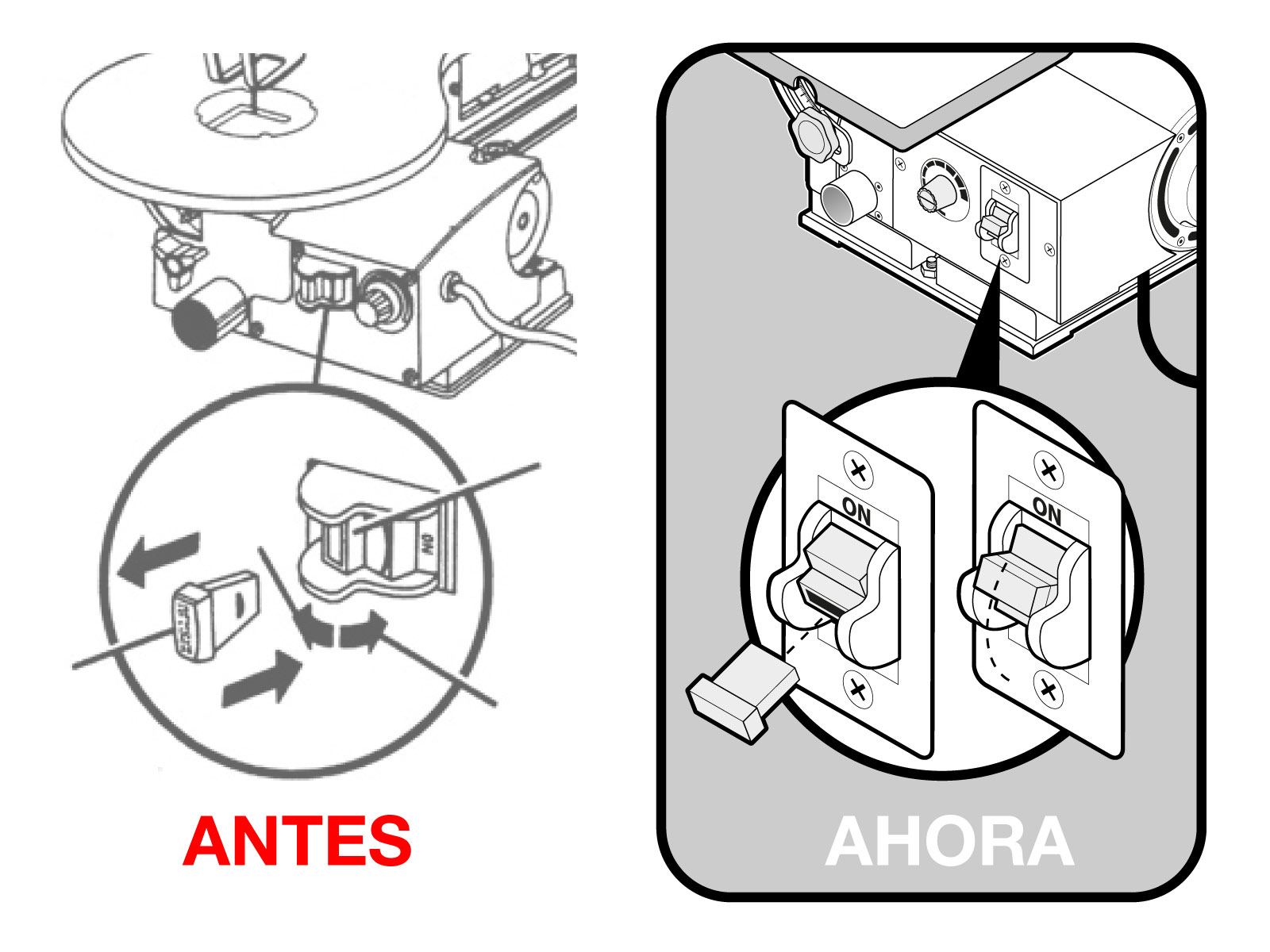
Time to share
I liked the experiment; it was time to share the results. But with whom? I didn’t know anyone at Truper and their website only had a regular contact link. It was like throwing a bottle with a message into the sea, but I had no choice, so I kept my skepticism to myself and submitted my experiment, explaining the reasons behind my initiative and putting myself at their service to improve their instructions.
And what do you know? Just a few days later, I received an answer. I had figured that the person responsible for reading and answering the emails would be some distracted intern, but no. They were writing from the Marketing Department!
It was a concrete message asking if I wanted to work in their Mexico City office. I responded immediately, being very clear on one thing from the beginning: I work independently. My freedom is not negotiable. However, I did ask for a half-hour meeting so we could talk face to face… and to make a long story short, that half hour was the start of eleven years collaborating with Truper.
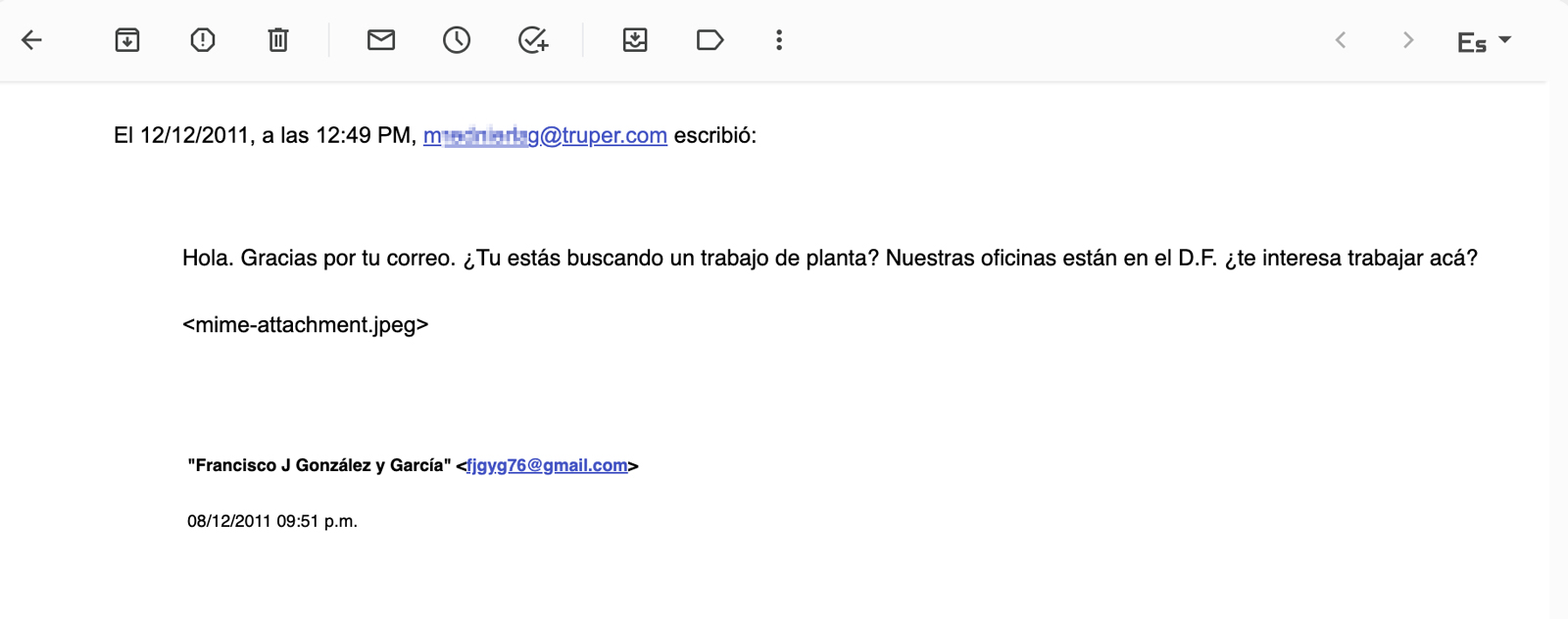
A clear goal
The goal we set at that meeting was to develop a line of manuals that would help reduce product returns, which happened because, unable to understand how to operate their tools, the users assumed that they didn’t work, when the truth was that the manuals were not being particularly helpful.
In order for this goal to be fulfilled, I needed to put myself in the client’s shoes, which came naturally because I happen to be a tool enthusiast and buy them regularly. Thus, it was easy to list the things that annoyed me about manuals:
- Redundant information.
- Bad writing.
- Poor visual references.
- Lack of design and graphic quality.
- Lack of logic in the order of the steps.
- Impracticality.
Beyond being annoying, those are real communication problems that hinder the understanding of instructions, making users avoid reading them – and when they do, misunderstandings and doubts are common, which leads to failures, inconvenience, returns and, in the worst case, accidents. Headaches that nobody wants.
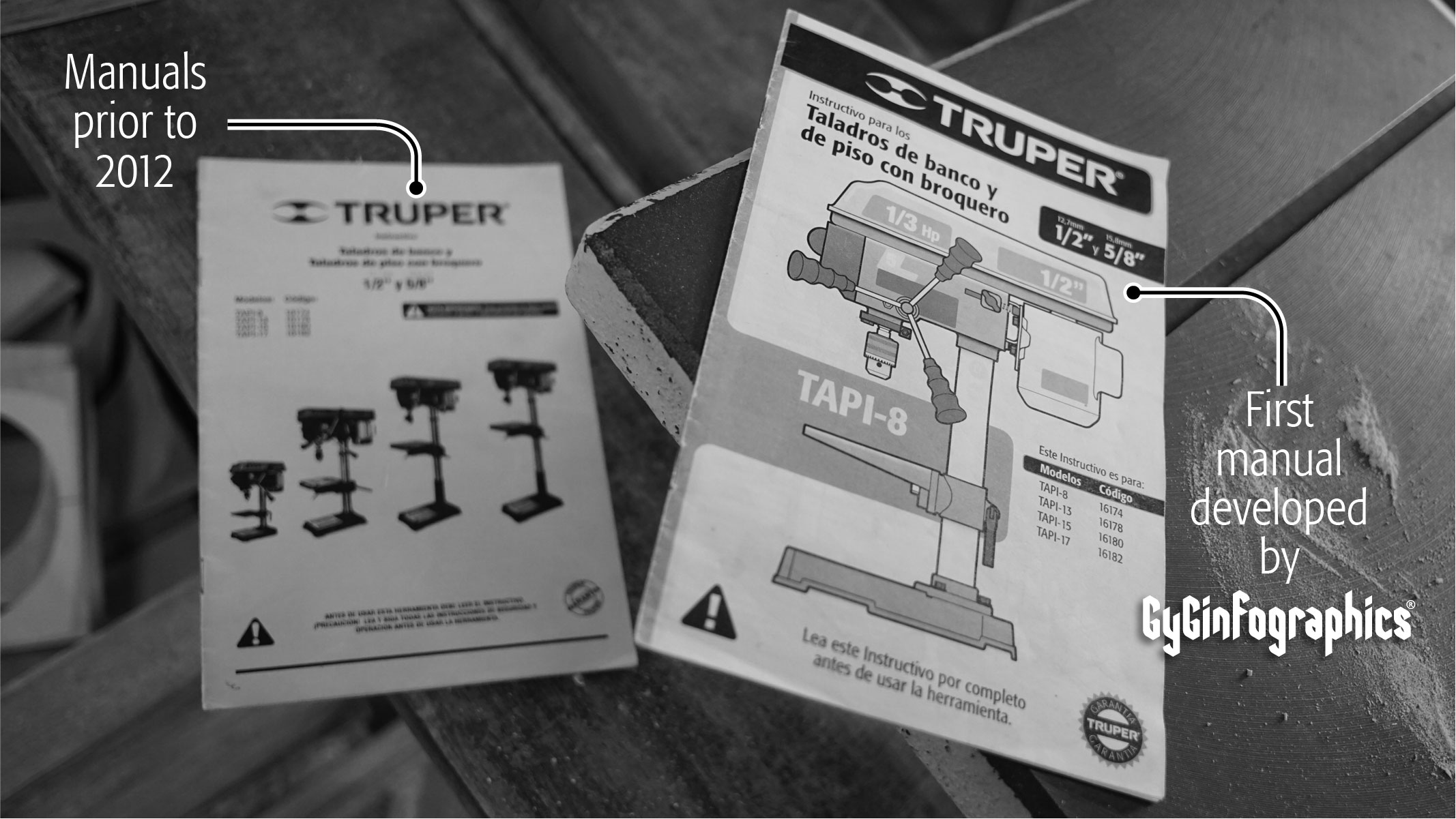
After-sales service
In my opinion, the after-sales service begins with the instruction manual. As a customer, when I read it, I expect to feel supported and accompanied by the brand in which I placed my trust when purchasing one of its products. It baffles me when this doesn’t happen and I’m forced to resort to other communication channels, like calling tech support or going back to the place where I bought the tool to request a change or a repair. These things not only represent an expense for me as a client, but also for the brand, which must manage an after-sales service that could have been avoided if the manual had done its job.
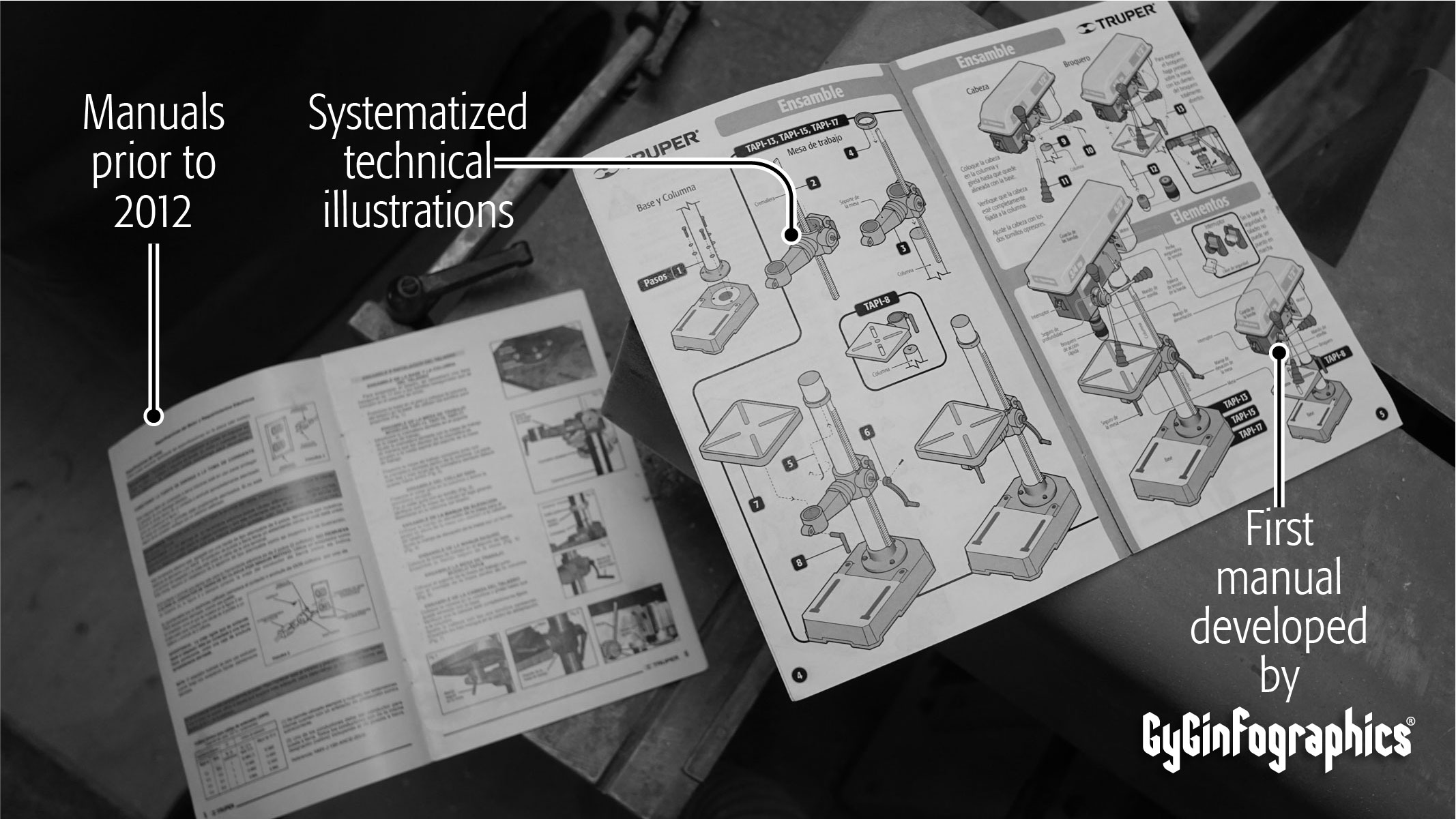
The stages of the project
I proposed two stages for the project; the second one was optional. First, to design a single set of instructions that would serve as a template that could be applied internally to the rest of the tools, in case we did not continue with the second stage, which would be to develop all the manuals for the rest of their tools, following the same design line.
I am still working on the second stage, with an additional goal: If the first manual fulfilled its purpose, the rest should at least do the same, maintaining a process of continuous improvement to polish and adjust details without breaking with its line, systematizing the design.
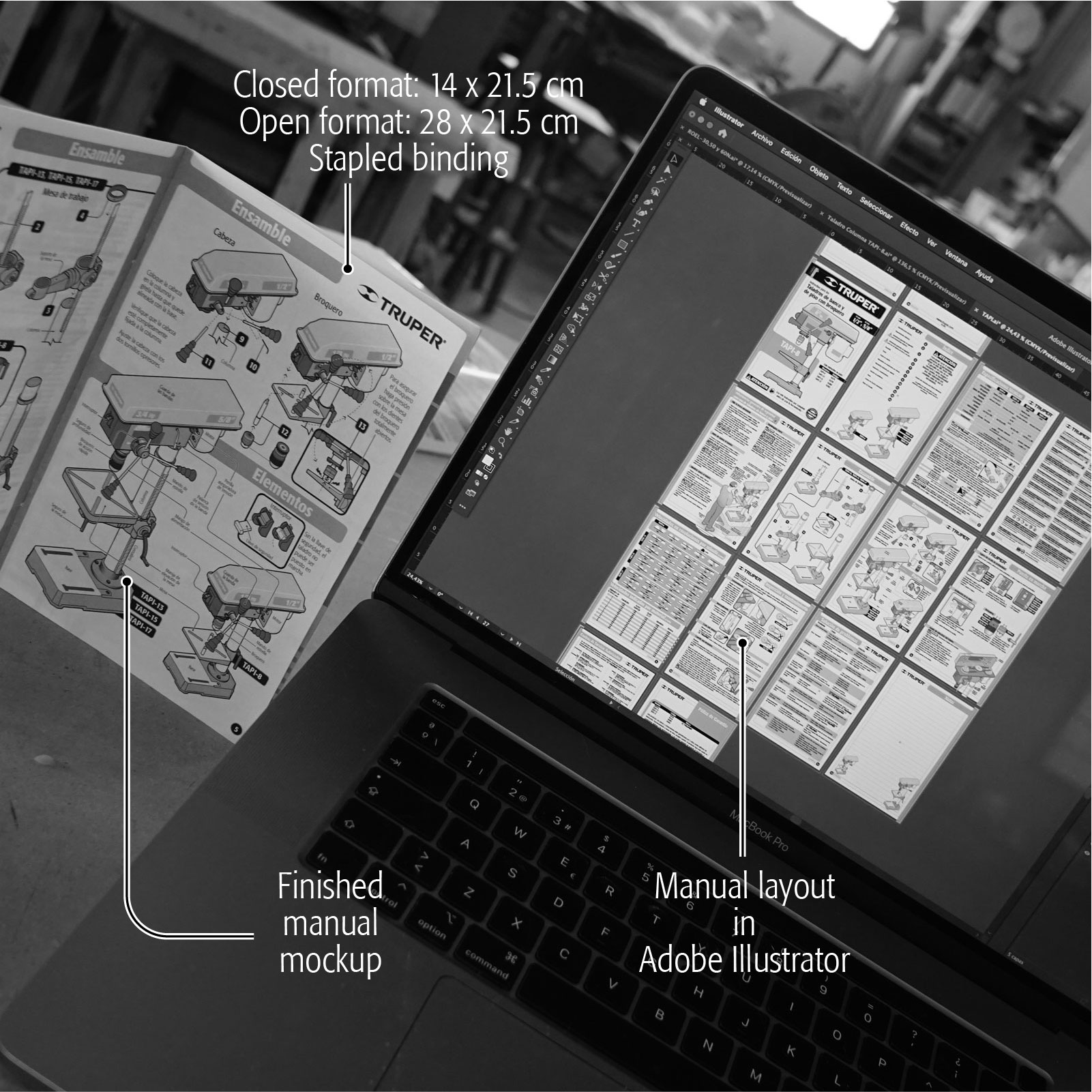
A systematized design
This has surely happened to you. You call the support line of some company and get someone efficient and friendly; then, sometime later, you call again, get someone else and receive poor or even disappointing attention. It is a coin toss, and you hope to be lucky enough to get the right person.
I didn’t want my manuals to be like this. If you buy a Truper drill today, you will get a manual that is as good, if not better, as the one you got with the saw blade you bought nine years ago. I work to systematize the design of my instructions so that this quality is maintained throughout all the tools and recurring customers feel familiar with it. One example is the case of my technical illustrations.

Wait for the second installment!
Would you like to take a look at my work process? Wait for the second part of this article, where I explain how I make the manuals. You can follow me on Instagram to find out when it’s ready.
Thanks for reading, and even more for sharing.
Francisco GyG
Translation: Aron Covaliu.



0 comentarios